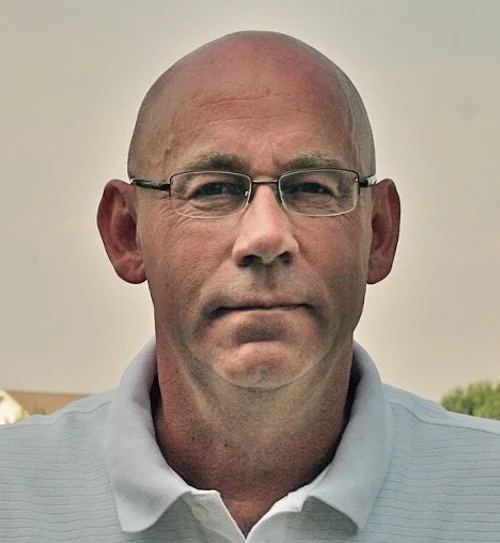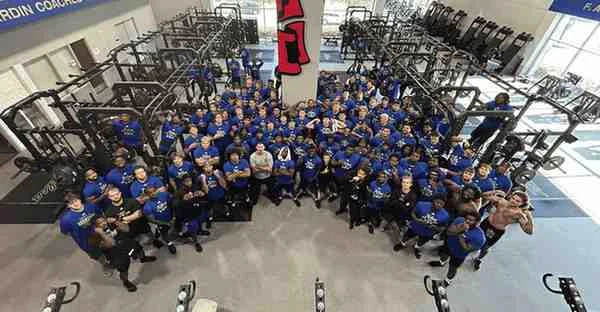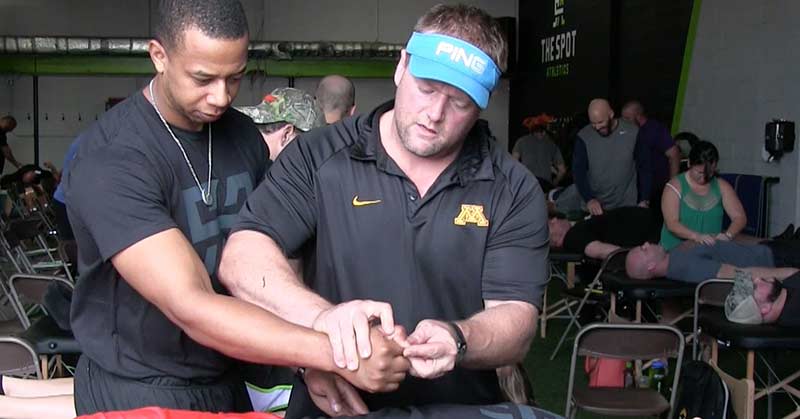
Necessity is the mother of invention. Discontent is the necessity of progress. Discontent is too gentle a word for the sickening catastrophe of an elite sprinter pulling a hamstring. I can only compare it to a racehorse breaking his leg.
But what can we do? If I hear one more strength and conditioning coach boast about preventing hamstring injuries by increased weight training, I may leave Twitter.
I’ve had great success with Reflexive Performance Reset™ (RPR), an easy-to-learn manual therapy that improves the durability of athletes, keeping them injury free. Think about that. Think deeply. Think of all the athletes who have been sidelined by mysterious soft-tissue injuries.
Reflexive Performance Reset
Thomas Edison said, “Discontent is the first necessity of progress.” When tired of living in darkness, we invent light bulbs. When sprint coaches are haunted by hamstring injuries, we find ways to prevent them.
When sprint coaches are haunted by hamstring injuries, we find ways to prevent them. Share on XReflexive Performance Reset is a simple combination of breathing and acupressure that treats imbalances in the muscular and nervous systems. When muscles work together in sequence while fully activated, the body moves correctly. Athletic movements are sequenced chain-reactions. Weak links in the chain and improper sequencing lead to injuries. When the same compensation patterns are reinforced, injuries linger and recur.
Reflexive Performance Reset training is proactive; it helps evaluate an athlete’s current physical state and then implements breathing and acupressure as a means of running injury prevention.
2012 IHSA State Track Meet: Blown Hamstring
At the final race of the 2012 IHSA State Track Meet, the 3A 4×4, my team, Plainfield North, featured four proud seniors with PRs of 49.5, 48.6, 51.6, and 49.5. Our ace-in-the-hole was our third runner, 6’3” Derrick Suss. A newcomer to the relay, Derrick jogged a 51.6 in the prelims the previous day. After running 22.00 in the 200 at Sectional, Derrick was destined to run sub-49, no question. Yes, four seniors with a chance to win it all.
After two outstanding legs, we found ourselves in second place. Seventy meters into the third leg, Derrick went down, hard. He had blown a hamstring. Quest Young and Marquis Flowers ran across the field to help their fallen teammate. Knowing that assistance from his teammates would disqualify our team, Derrick waived off their help and crawled ten meters to the baton. Somehow he found the courage to pull himself up and limp the remainder of his lap.
Evan Flagg took the baton long after the other eight teams finished the race. Evan ran the most spirited solo anchor lap I’ve ever witnessed. Twenty thousand emotional fans stood in support of Plainfield North, many with tears in their eyes, including me. We courageously finished the race but finished last with the slowest time in the 120-year history of the IHSA State Track Meet. Four seniors from Plainfield North stood on the awards stands and proudly accepted their ninth place medals.
The train wreck of this race may be the best and worst moment of my coaching career. I will be forever proud of my team’s courage and forever saddened by what could have been.
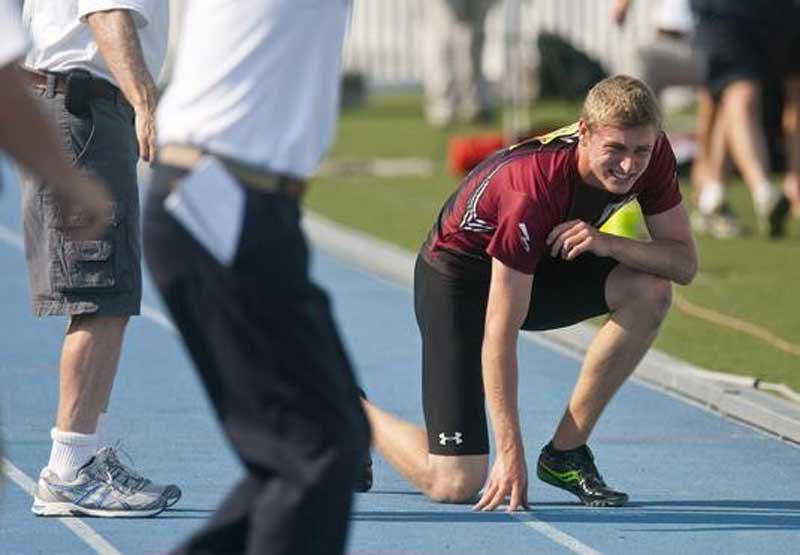
2009: Career-Ending Hamstring Pull
Rewind four years. Chris Korfist was coaching speedster John Fox. As a junior, John won silver in the 100 (10.83) and bronze in the 200 (21.93 with a PR of 21.75). He also led York’s 4×1 to a 5th place finish. Chris was looking forward to entering 2009 with the best sprinter in the state and of his coaching career.

In 2009, the curse of speed reared its ugly head. John pulled a hamstring. He did not compete in the 100 or 200 at that year’s state meet. Somehow, John fought through his pain and helped York’s 4×1 and 4×2 to silver medals (41.84 and 1:26.06).
John Fox’s injury was one of those events in coaching that haunts or hounds you for your career. John did everything I asked of him. Ultimately, our training had a lot do with his injury. Even worse, there was nothing I could do to help him. John’s injury forced me to look at what we were doing and try to understand why it happened. My search took me beyond token theories about why hamstrings fail.
John’s injury had a huge impact on me personally. I felt responsible for what happened.
I had other athletes injured earlier in my career, as we all have. I’ve had disappointments in big races, but that is part of sport. John’s injury was different. The stakes were higher. His ceiling was higher. John could have been one of the best ever.
Indoors, as a senior, John ran a 55m dash at one of the top times in the country. After the injury (going into the outdoor season), we held him out until the IHSA Sectional, the last possible meet. John never ran the 100m or 200m his senior year. He ran the sprint relays at the sectional, the state meet, and nationals. John’s 4×2 team placed second at nationals. After that, he never raced again. He received a scholarship to the University of Illinois but never raced.— Chris Korfist
What Can we Do?
Maybe the answer is less weight training. Or more sprint volume. Or less sprint volume.
More intensity, less intensity, core, stretching, yoga, prayer?
Let’s return to 2012. Just four weeks before Derrick’s injury, I received an email from Chris: “I wanted to let all of you know that I have invited Douglas Heel, from South Africa, to come to Chicago to teach and certify you in his technique. I have been using his techniques for three months and have had some dramatic results, not only in injury prevention but performance as well. Please contact me with further questions after reading the attached brochure. I wanted to let you know first before I opened it up. We are limiting it to the first 30.”
I opened the brochure, saw the $500 fee, and disregarded the invitation.
If I had paid the $500 and learned the Be Activated method, my 4×4 team may have been state champs. In hindsight, I would pay thousands to see Derrick run 49.0 and proudly hand-off to Evan.
As coaches, we send our athletes to doctors for stiff hamstrings, sore quads, and tight Achilles. Doctors seem to mindlessly prescribe rest, ice, compression, and anti-inflammatories.
This past football season, I had a two-way player who went to the doctor with a sore Achilles. The doctor sent him back with a note saying to “play only one way.” One way? I assumed that meant he could play offense or defense but not both. Are you kidding me? I “reset” the kid, and he played fast and pain-free (but only on defense).
I once observed a paid athletic trainer stretching a severe hamstring injury. I went ballistic. The trainer immediately pointed to the fact that she had credentials and I did not.
Prevention: RPR
The best way to avoid the soft-tissue injury conundrum is, of course, prevention.
Consider the idea that the technique that makes athletes more durable can also improve performance. That this same therapy also transitions athletes from a sympathetic state of fear, stress, fight, flight, or freeze to a parasympathetic state of balance, calm awareness, and mindfulness.
“Stress is not a state of performance, stress is a state of survival,” Douglas explained. Before I met him, I believed adrenaline was a preferred drug of athletes.
When we are in a sympathetic state—fight, flight, or freeze—our body collapses and implodes to protect vital organs. No one can perform well in a state of implosion. If pills could produce calm-focus or relaxed-intensity, we would all be addicts.
In the statements above, I’ve simplified Reflexive Performance Reset to its three main pillars: durability, performance, and mental state.
Although Be Activated was taught to medical professionals as a treatment method, Chris was implementing it in a non-medical performance setting, using activation as a coach, not a physical therapist, chiropractor, or doctor.
Douglas fully supported adapting the methods to performance training and injury prevention, and RPR was unveiled last summer as the next generation of Be Activated. Reflexive Performance Reset is not a treatment for injuries and is not intended to treat, fix, manipulate, or otherwise replace medical advice and treatment.
RPR gets the body breathing and moving correctly to prevent injuries and improve performance. Share on XInstead, it’s used as running injury prevention, as it is designed simply to get the body breathing and moving correctly.
“I think if I had RPR in 2009, John Fox would not have injured his hamstring,” Chris said.
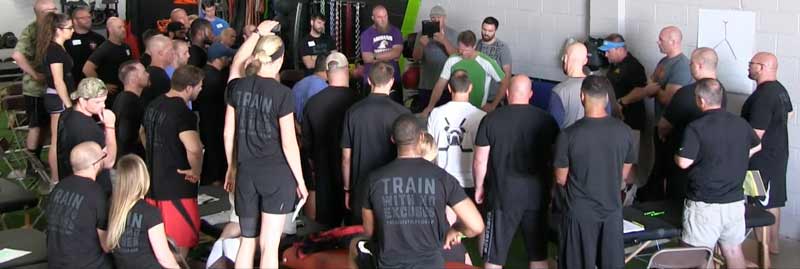
Chris, Cal Dietz, and J.L. Holdsworth are the founding fathers of RPR. Chris is a high school teacher (Hinsdale Central) and coaches at both Hinsdale Central and Montini Catholic. Cal is the Head Strength & Conditioning Coach at the University of Minnesota and author of Triphasic Training. J.L. is the Founder and Head Strength Coach at The Spot Athletics in Columbus, Ohio.
“Here at the University of Minnesota, out of over 4,500 hockey practices, we’ve had only one missed practice due to soft-tissue injury. RPR makes athletes more durable,” Cal explained.
I went to my first Douglas Heel seminar in October 2014. I’ve now attended five seminars, spent more than 100 hours with Douglas, and written seven articles on his technique.
Reflexive Performance Reset Seminars in Cincinnati, Austin, Bakersfield, and Chicago have sold out. The price of attending a seminar and getting certified is $250. For more information, visit Reflexive Performance Reset.

